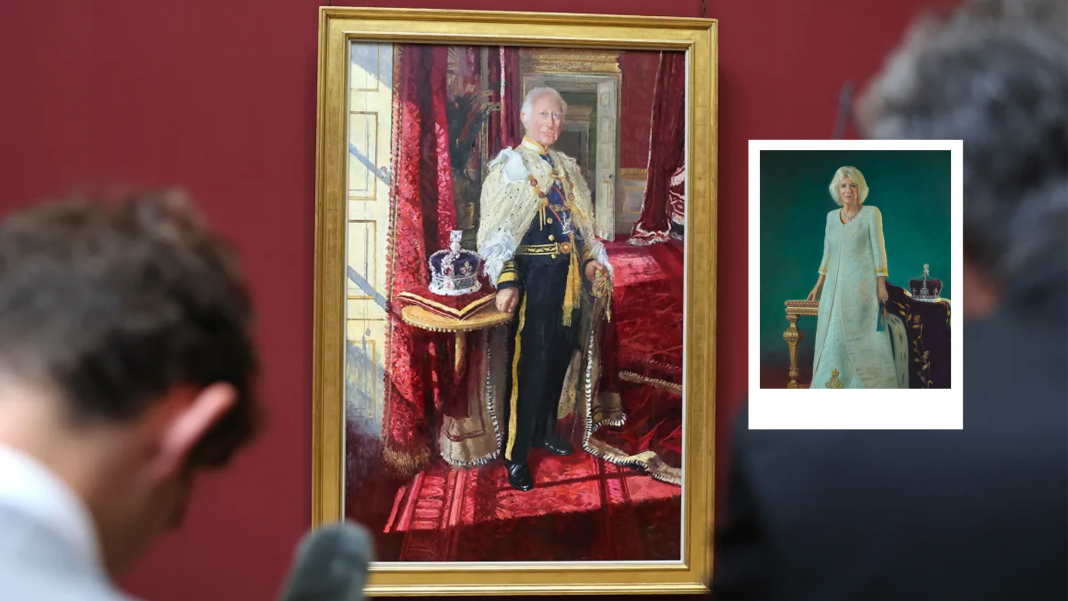More than two years after the coronation of King Charles III, Britain’s royal tradition continues with the unveiling of his official coronation portrait. The painting, steeped in historical symbolism yet softened with modern touches of humanity, was revealed to the public this week at London’s National Gallery—offering a carefully crafted image of the monarch for posterity, continuity and public reflection.
A royal tradition reimagined
The coronation portrait is more than a ceremonial formality; it is a powerful cultural symbol. Since the early 1600s, when King James I (also James VI of Scotland) sat for what became the earliest known coronation portrait in the royal collection, such paintings have served as political statements and visual anchors for a monarch’s reign. Today, the image still carries weight, though it now walks a finer line between formality and accessibility.
King Charles III, now 76, is seen standing in his Robe of State beside the Imperial State Crown, the iconic regalia associated with British sovereignty. Painted by Peter Kuhfeld, the portrait presents the monarch within the grandeur of the Throne Room at St James’s Palace, one of the oldest royal residences. Yet, despite the ceremonial garb and formal setting, there is a quiet intimacy to the composition—an intentional move by the artist. “I have tried to produce a painting that is both human and regal,” Kuhfeld said, underscoring his effort to honor tradition while portraying a more relatable sovereign.

A monarch amid personal trials
The portrait’s unveiling comes at a complex moment in King Charles’ reign. Diagnosed with an unspecified form of cancer in early 2024—just ten months after his official coronation—the king has been undergoing treatment even as he fulfills ceremonial duties. He sat for the painting during this period, lending an added layer of poignancy and resilience to the finished work.
Despite his health challenges, Charles has remained publicly engaged, signaling a steady commitment to his role. This portrait is both a record of his coronation and a symbol of perseverance—crafted not only for his contemporaries, but for history. In this context, the painting becomes more than a regal image; it becomes a quiet testament to endurance, duty and personal fortitude under the crown.
Queen Camilla’s portrait: Elegance and empathy
Alongside King Charles’ portrait, the official image of Queen Camilla was also revealed. Painted by Paul Benney, her portrait offers a complementary, yet distinct, vision of the royal consort. Camilla is shown wearing her Coronation Dress—ivory-colored silk designed for the occasion and standing next to a different crown than the one worn by the king.

Benney, whose work often blends traditional portraiture with a subtle narrative style, said his intention was to balance the historic weight of the coronation with a personal portrayal of the queen. “I wanted to acknowledge the historic nature of the coronation while also showing the humanity and empathy of such an extraordinary person taking on an extraordinary role,” he explained.
Where the king’s portrait speaks to continuity and endurance, the queen’s portrait is more personal—emphasizing warmth, approachability, and grace. Together, the two paintings offer a fuller representation of the royal couple’s dynamic, one that speaks to both ceremonial roles and individual identities.
From gallery to palace: A journey of legacy
The portraits will be on view at the National Gallery in London for one month, allowing the public a chance to engage directly with these modern royal representations. After that, they will be moved to Buckingham Palace, where they will join a vast collection of royal portraiture spanning centuries.
Though painted in the present day, these works take their place in a tradition over 400 years old. In earlier eras, royal portraits often served as declarations of authority—tools of statecraft meant to impress, inspire, or intimidate. Today, they are less about spectacle and more about storytelling. Through careful composition and subtle artistic choices, these modern portraits capture a monarchy in transition: at once anchored in ritual and open to vulnerability.
For viewers, the experience of seeing these portraits in a public space is also significant. In a time when the British monarchy is both scrutinized and celebrated, such moments help shape public perception and reinforce the cultural presence of the royal family in everyday life.
A face for the future
As King Charles’ reign continues, the release of this official coronation portrait serves as a marker in his evolving legacy. It reminds us of the enduring role of the monarchy, not just as a constitutional institution, but as a cultural and historical symbol. Painted during a time of personal challenge and public duty, the image of Charles—stately yet human—offers a glimpse into the kind of monarch he aspires to be.
In combining tradition with tenderness, regality with realism, these portraits don’t just celebrate a coronation; they define a modern chapter of the British royal story. And in doing so, they carry forward an art form that has long shaped how we remember kings and queens—not as distant figures in gilded frames, but as people shaped by their time, and remembered by how they chose to be seen.



